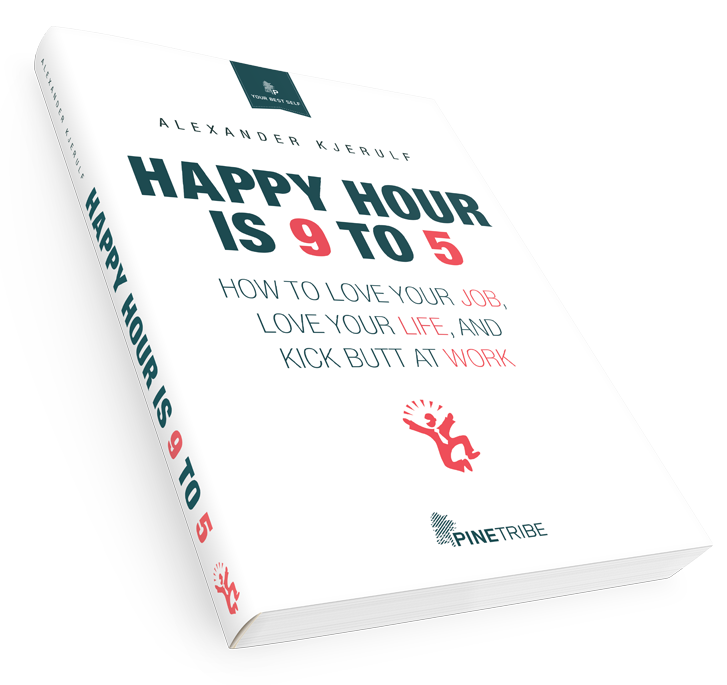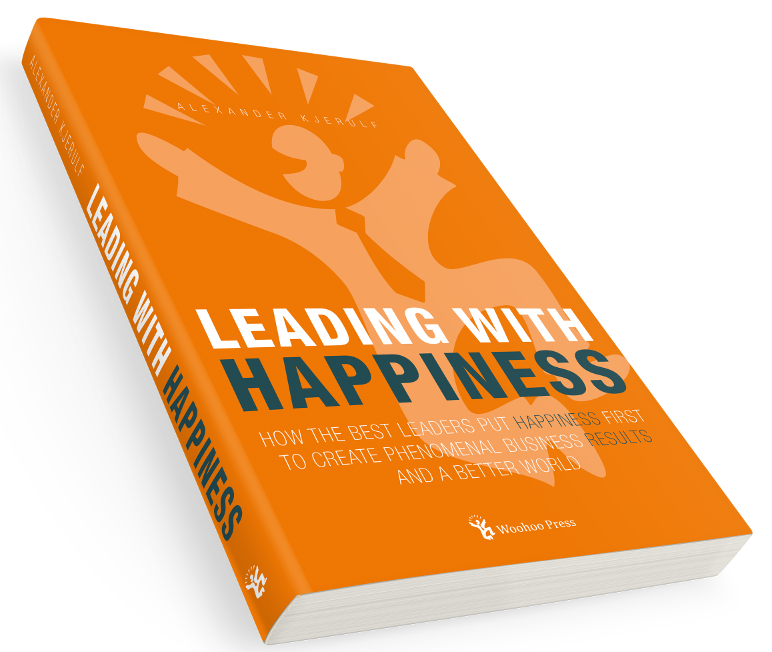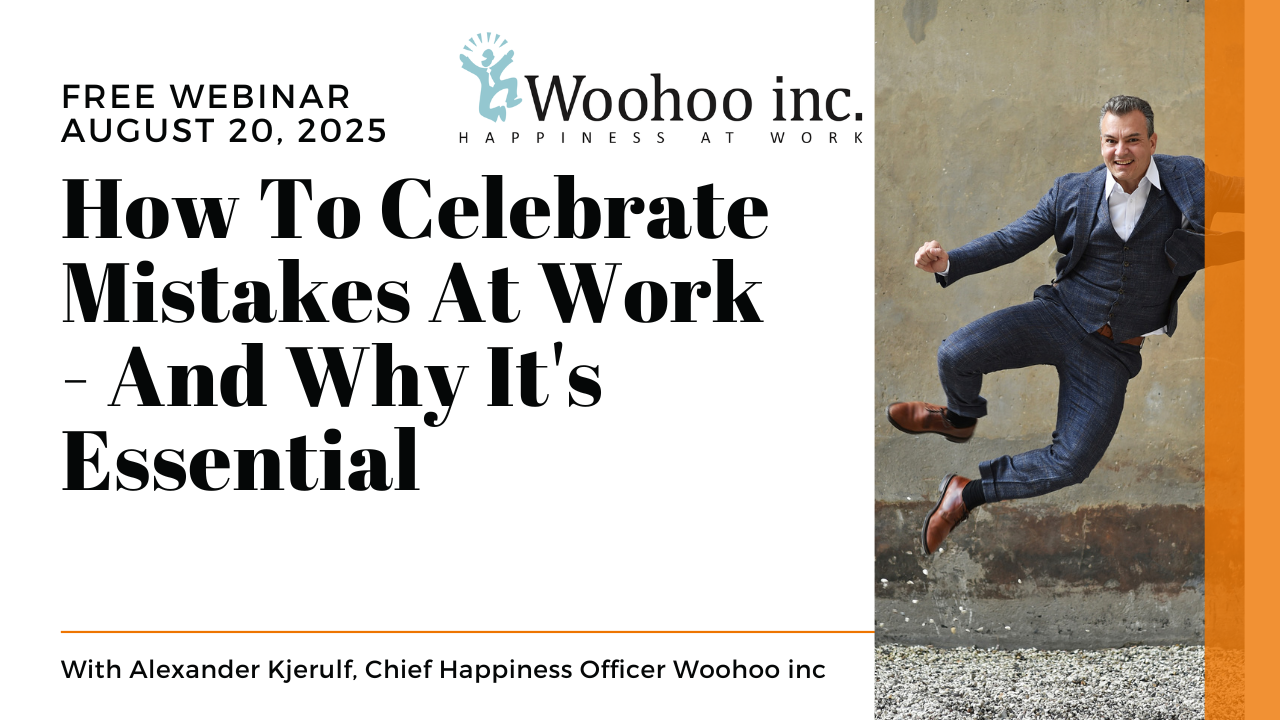-
The time I learned to say “No” at work

It was only my second job out of university, working as a software developer for a small consulting company in Copenhagen. I was 26 years old, dressed in a suit and tie that still felt like a halloween costume to me, having meetings with the customer’s VP of finance, trying to find out exactly what the IT system we were developing for their new factory should be capable of.
(more…)
-
The six practices of happy, succesful workplaces
This chapter is not yet finished – but I really need your help, so I’m posting it now.
Am I on the right track? It kinda feels like the advice here is either too simple or too complex to be useful. I want people to read this chapter and be inspired by what other great companies are doing. To get ideas they can implement themselves.
Is it working? What do you think?
How to make your business happy – in practice
What can a workplace do to make its people want to be happy there? Given that raises, bonuses and perks don’t work what are the things that do? We could start from scratch and invent some methods and tools, but it makes much more sense to learn from the best practices already out there. What is it that the best, happiest and most successful companies do to reach high levels of happiness, excellence and profits? What makes their people consistently choose to be happy at work and lets employees and leaders work together to create great workplaces?
And let’s not just look at what they do, let’s look at what they do that can readily be
stolenimplented in your workplace. Let’s focus on practices that are:- Generic – so they apply to almost any workplace, big or small, private or government
- Effective – so they make a real difference
- Fun – so they make people happy
- Good for business – so they’ll get you more results
-
Monday tip: Bring a co-worker a cup of coffee
 This tip is really, really, really simple:
This tip is really, really, really simple:Bring a co-worker a cup of coffe.
At some point during the day, without being asked, bring a co-worker a nice cup of hot coffee. Substitute tea, cocoa, a coke, etc. based on your co-workers preference.
For extra bonus points:
- Do it for someone who obviously needs a fresh cup of energy
- Stealthily find out that person’s coffee preference, and bring a cup that’s just right (milk, sugar, etc).
- Bring someone you don’t talk to much (or even someone you don’t like much) a cup
- Use the coffee as a chance for a chat with that person
Once you’ve done it, please report back here and tell us how it went. Did it work or fail miserably? Did you do it exactly as proscribed or improve upon the mission in your own way?
Share what you did with other people around the world so we can all create more arbejdsglaede together :o)
-
Weekend videos
 Mark Hurst emailed me some apetizers for the upcoming EureGEL conference.
Mark Hurst emailed me some apetizers for the upcoming EureGEL conference. I can’t wait to go – GEL looks excellent!
Oneopenwindow is a pretty cool project which aims to collect lots of videos of people telling cool stories and sharing their knowledge.
My absolute favorite video on the site so far is Brad Blanton explaining how to achieve enlightenement in three minutes. Guaranteed. Though the site is in danish, this video is in english and you can find the link at the bottom of the front page. It’s hilarious – check it out!
You can also find 12 short videos of me telling stories about happy companies (in danish).
And over on youtube there’s a video of me doing a 6-minute peach-kucha presentation on happiness at work at Reboot8 (in english).
-
The top 10 advantages of low-rent living

One of the biggest threats to happiness at work is having too many fixed expenses at home. When you’re completely dependent on bringing home a pay check (or two!) every single month, you’re vulnerable. If work turns out to be unbearable you can’t simply up and leave and take three months without income.
I’ve chosen low-rent living for myself. At first it was through accident rather than planning but now I would never live any other way. Read on to see how it has made me happy at work – and in life.
(more…)
-
Five great tips for successful success
Guy Kawasaki asks Seth Godin five questions, including “What are the five things that enabled you to be successful?”. Seth answers:
- No ulterior motive. I rarely do A as a calculated tactic to get B. I do A because I believe in A, or it excites me or it’s the right thing to do. That’s it. No secret agendas.
- I don’t think my audience owes me anything. It’s always their turn.
- I’m in a hurry to make mistakes and get feedback and get that next idea out there. I’m not in a hurry, at all, to finish the “bigger??? project, to get to the finish line.
- I do things where I actually think I’m right, as opposed to where I think succeeding will make me successful. When you think you’re right, it’s more fun and your passion shows through.
- I’ve tried to pare down my day so that the stuff I actually do is pretty well leveraged. That, and I show up. Showing up is underrated.
I really, really like each of these, and what we have here might as well be the beginnings of a manifest for honest business. What runs through each of Seth’s five points is a certain ego-lessness, a sense that business is not about me or what I can get but about what I can contribute.
Being in business for the giving rather than the getting is a great approach and a sure path to a happier and more fulfilling work life. And success.
-
Free presentation: Festival In The Workplace
 As a warm-up event to the EuroGEL conference, Roosevelt Finlayson of the Bahamas and I will be doing a presentation titled Festival In The Workplace.
As a warm-up event to the EuroGEL conference, Roosevelt Finlayson of the Bahamas and I will be doing a presentation titled Festival In The Workplace.Roosevelt has been asking himself two simple questions:
- Why is it that many people around the world are demotivated and listless at work but when the time comes for the local carnival they work hard, tirelessly and for no pay to prepare it?
- How can we get some of the motivation, energy and happiness of the carnivals into our wokplaces?
Roosevelt has created a unique business concept called Festival In The Workplace and together we will do a presentation why festivals create happiness and results in businesses. This will be a unique event, giving you insight into the festival traditions of the Caribbean and South America and how they can be applied in the workplace. There will be music and videos from the Bahamas Junkanoo Festival and plenty of real-life case stories.
The practical details
The event is thursday august 31st from 4pm to 6pm. It’s at Café Enter, Guldbergsgade 29 in Copenhagen (right next to the movie theatre Empire Bio). It’s in english and it’s free to participate. Send me an email if you’d like to be there but hurry – we only have room for 40 people.
-
Why secret salaries are a baaaaaad idea

It’s a golden rule in most businesses that salaries must be kept secret. Except for a few heretics it is almost universally accepted that mayhem would ensue in the workplace if people knew what their co-workers, their managers or – gasp – the CEO was making.
Making salaries open inside a company instead seems like a wild idea sure, but it makes a lot of sense and brings advantages for both the workplace and for its people. Read on to see why.
The case against secret salaries
There are three major reasons why secret salaries are silly:
- It frustrates employees because any unfairness (real or perceived) can’t be addressed directly.
- They’re not secret anyway. People talk, you know.
- It perpetuates unfair salaries which is bad for people and for the organization
Let’s look at each of these.
If Johnson over in production is making 1.000 more a month than I am and the CEO is making 22 times what I’m making, then hopefully there’s a good reason for it – one that I as an employee am entitled to know and capable of understanding. So why are salaries treated as state secrets?
The main reason may precisely be that they’re not currently fair and therefore making them open seems dangerous to many workplaces. Maybe Johnson is making more than me, not because he does a better job, but because he drives a harder bargain when it comes time to negotiate salaries. Or sucks up to the boss. Or has some pictures from the last christmas office party showing the VP of marketing and an intern in… never mind. That doesn’t seem fair, does it? We can all agree, I think, that it makes much more sense to determine salaries based on people’s value to the company.
I have worked at two different companies where salaries were secret and guess what: They weren’t. Most people knew what most others were getting. In one company I consulted for, the IT department had even found the Excel spreadsheets HR kept the salaries in. They knew what everyone was getting.
And here’s the problem: If Johnson’s salary is (unfairly) higher than mine, and secret, I can’t complain to my manager about it because I can’t admit that I know about it. When a company sets up a situation where people can see the unfairness but can’t address it directly, or even discuss it openly, they’re rigging the system for maximum frustration.
Companies must attempt to pay their people as fairly as possible. You might think a company should try to pay people as little as possible, but companies who subscribe to that philosophy must be prepared to steadily lose all their good employees to competitors willing to pay people what they’re worth. A company must attempt to pay each employee a fair salary, ie. one that matches the employee’s skills, the market average and other employees inside the company. In other words, the company itself has a vested interest in keeping salaries fair, and keeping salaries secret makes that nearly impossible.
The case for open salaries
Making salaries public (inside the company of course) has some major advantages:
- Salaries will become more fair. The system gets a chance to adjust itself.
- It will be easier to retain the best employees because they’re more likely to feel they’re getting a fair salary.
- The pressure is on the people with the high salaries to earn their keep. Everybody has to pull their weight – the higher the salary, the larger the weight.
I believe on a very fundamental level that openness is better than secrecy, in life and in business. I’m not naïve enough to share all information all the time, but my chosen approach is “Let’s make everything open by default and only make those things secret that absolutely need to be”. Would I share my list of prospective clients with my competitors? Nah. Would I share it inside the company? Heck, yeah!
So when I co-founded an IT company back in 1997, we decided right from the beginning to make salaries open. We even had a page on the intranet where everybody could see what everybody else got. And yes, this did cause some discussions along the lines of “Hey, why am I getting less than Johnson, my work is at least as good at his”. We took those discussions seriously and we either clarified the difference in salary (eg. “Johnson gets more because his clients are consistently more satisfied than yours”) or we adjusted the salaries to match.
Semco is a Sao Paulo-based company of 3.000 people who’ve gone one step further: They allow employees to set their own salaries. No really, they do! This works only because all salaries are open. I could demand a high salary and get it but I’d better be showing results because people are sure to be watching those who make a lot of money. That’s a business experiment only for the truly daring enterprise, but Semco has demonstrated for the rest of us that it can work.
Ricardo Semler, the owner of Semco said this about the value of discussing salaries openly:
Salaries are a sensitive subject, but open communication is important enough that it should be tested, even if there is a price to pay. It’s at the very heart of a shared culture. If discussion of salaries is taboo, what else is off limits? The only source of power in an organization is information, and withholding, filtering, or retaining information only serves those who want to accumulate power through hoarding. Once an e-mail is not circulated, or if it is edited, then illegitimate pockets of power are created. Some people are privy to information that others don’t possess. Remove those pockets, and a company removes a source of dissatisfaction, bickering, and political feuding.
– Ricardo Semler in his excellent book The Seven-Day WeekendYou tell’em Ricardo. Making salaries open opens yet another pocket of information that the power-hungry would otherwise use to consolidate their positions – to the detriment of co-workers and the organization.
So come on: Make salaries public. Put them on the intranet. I dare you! Why keep them a secret?
There is one requirement for open salaries to work though: Employees must know what factors influence salaries. Are they based on customer satisfaction, hours worked, quality, sales figures, seniority, skills, commitment to the compay, education, etc… What matters when setting salaries and what doesn’t matter? If the company has not clearly stated this, comparisons are meaningless. It is of course management’s responsibility to know and to publicize the factors that determine employees’ salaries.
In our company we decided this together, and we agreed that the most important factors would be customer satisfaction and commitment to the company and that formal education and seniority didn’t matter. We put this in a document on the intranet as well. I can safely say, that making salaries open was one of the best things we did for our company and it almost made salary a non-issue – it was certainly nothing that caused us any frustration or troubles.
So try it: Make salaries open. I double-dare you.
UPDATE: This post sure generated a lot of comments. I love it! I’ve posted a comment round-up here.
If you liked this post, I think you’ll also like these:
-
Ask the CHO: Enjoying work itself
I’m taking questions about happiness at work, and Chris asked me a good one:
Why do you never talk about the happiness you can derive from work itself, but always about the ancillary parts, i.e. the relations you have with your colleagues? Surely the job itself should be the greatest contributor to your happiness at work. I am thinking of Csikszentmihalyi’s work on Flow.
That’s a great observation Chris – thank you for calling me on it. I’d kinda noticed this myself, but I never really though about it untill I read your question.
I think I do need to focus more on the enjoyment people get from the work itself, because for many people it is a huge part of happiness at work. Off the top of my head, there are three kinds of enjoyment you get from work itself:
- The tasks themselves can be fun. Like talking to customers, when you like your customers or painting houses if that’s your thing.
- Getting results feels good. Achieving your milestones, making the numbers, reaching your goals is a huge source of satisfaction
- Getting better makes you proud. Learning, improving, being able to do more today than yesterday is great.
Is there more to the happiness derived from the work itself? What do you think?
I’m not sure the job itself always needs to be the main source of happiness at work. Many people have jobs where the tasks themselves bring them little enjoyment (say, flipping burgers at McDonald’s) but are still perfectly happy at work. In this case people need to focus more on the ancillary parts, as you call them.
As for flow, most jobs bring with them opportunities for flow – even highly repetitive jobs. This does not necessarily mean that people are happy at work… I’m a little skeptical of the link between flow and happiness at work, and while flow is fun and pleasurable, I’m not convinced that it’s an indication of happiness, nor vice versa.
Connect
Get our newsletter
“I can’t believe it – a newsletter actually worth reading!”
– Subscriber
Over 6,000 people subscribe to our newsletter with tons of tips about happiness at work.
Get our books

“It’s very, very good. It’s incredibly well written, full of insights, and there are exercises to improve your own happiness at work. You can’t ask for more than that!”
– David Maister, author of Practice What You Preach

“What an inspiring book. Every leader should read it. This type of leadership has been integral to our success and I know it will boost your results too.“
– Garry Ridge, CEO WD-40 Company
Get Our Free Newsletter
Over 6,000 people already get our free newsletter with useful tips, videos, links and articles about happiness at work.
Subscribe to our newsletter here.



